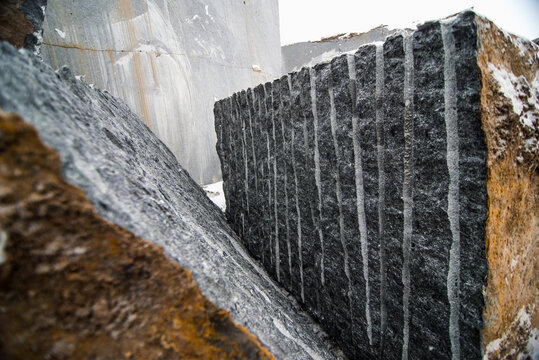Opening Natural Treasures: Granite Quarries in South Africa Introduced
Introducing the Mysteries of Granite Quarrying: Where Strength and Style Meet
The globe of granite quarrying is a world where the raw toughness of nature assembles with human creativity to produce structures that stand the test of time with an air of beauty. From the midsts of quarries to the precise polishing in workshops, the process of transforming granite right into architectural marvels is a complex dancing of custom and innovation. As we peer into the midsts of this old craft, we begin to uncover the hidden ins and outs that shape the really essence of our developed atmosphere.
The Beginnings of Granite Quarrying
In the record of architectural history, the beginnings of granite quarrying are shrouded in a tapestry of old craftsmanship and geological wonders. Dating back to ancient Egypt and Mesopotamia, the extraction of granite from quarries marked the beginning of a journey that would eventually cause the production of some of the globe's most legendary structures.
Granite quarrying's roots can be traced to the competent craftsmens who recognized the stone's resilience and aesthetic appeal. With a combination of primitive tools and sheer determination, these early quarry employees unearthed granite blocks that would come to be the foundation of human beings.
As people developed, so did the techniques of quarrying granite. The Romans, renowned for their engineering expertise, developed advanced methods for removing granite to build monuments, temples, and roadways that stood the test of time.
The legacy of these old quarrying practices remains to form modern style, with granite remaining an icon of strength and sophistication in building and construction tasks around the world. (granite quarries in south africa)
Tools of the Quarrying Profession
The evolution of granite quarrying techniques from ancient people to modern times highlights the vital function played by the tools of the quarrying trade in shaping the sector's practices. In old times, quarrying tools were basic, frequently including chisels, hammers, and wedges made from materials like bronze or iron. These tools required substantial workforce and time to extract granite blocks from quarries.

In addition, the introduction of pneumatically-driven devices and high-powered machinery has substantially lowered the physical labor required in quarrying operations, boosting employee safety and security and efficiency. As the quarrying industry remains to introduce, the tools of the profession stay at the forefront of driving progression and forming the future of granite removal.
Extracting Blocks of Granite
Utilizing precision machinery and progressed techniques, the extraction of granite obstructs from quarries has come to be a sophisticated process in the modern quarrying sector. Regulated blasting strategies are after that used to break apart the granite into workable areas.

Sprucing Up and Completing Strategies
To accomplish a flawless surface area on granite blocks, competent craftsmens employ a collection of thorough sprucing up and completing strategies. After the initial extraction and forming procedures, the granite blocks undertake an extensive sprucing up phase to enhance their all-natural elegance and sturdiness.
In addition to sprucing up, finishing strategies are used to further improve the granite's look. By very carefully picking and applying these brightening and finishing methods, craftsmens can transform raw granite blocks into charming items that display both strength and sophistication.

Environmental Influence and Sustainability
With the growing emphasis on environmental consciousness in the market, granite quarrying practices are increasingly inspected for their effect on all-natural sources and long-term sustainability. In addition, the transport of granite from quarries to processing facilities generates carbon emissions, better adding to ecological deterioration.
To alleviate these influences and visit this website ensure sustainability in granite quarrying, industry stakeholders are embracing numerous steps. Executing sophisticated technologies to decrease power usage and water usage, reclaiming quarried land for ecological repair, and promoting responsible sourcing practices are some strategies being used. Moreover, accreditations such as the Forest Stewardship Council (FSC) and the Management in Power and Environmental Layout (LEED) assistance consumers recognize eco friendly granite products.
Final Thought
Finally, granite quarrying is a procedure that needs specialized devices and methods to extract blocks of granite and polish them to a high level of coating. While click site the ecological influence of quarrying can be substantial, efforts are being made to improve sustainability practices in the industry. Overall, granite quarrying is a delicate equilibrium in between utilizing the strength and elegance of this natural rock while minimizing its influence on you could check here the atmosphere.